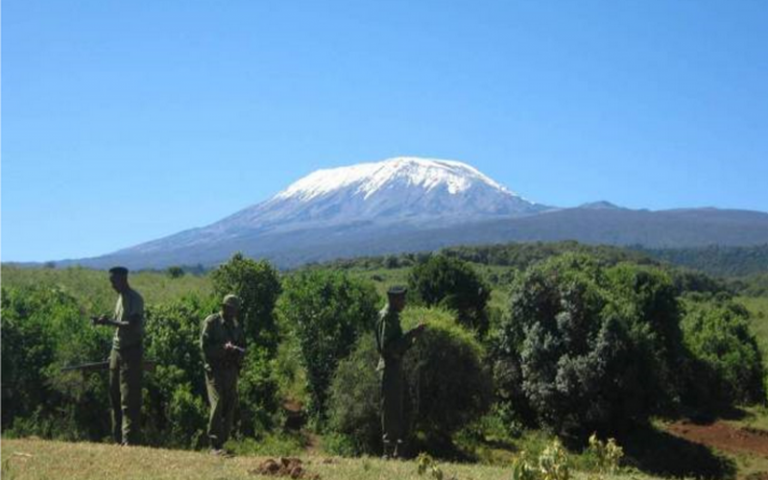Are Tanzania’s wildlife management areas delivering on their promise to alleviate poverty?
Anthropologists at UCL are exploring the impacts of Tanzania’s community-based schemes to manage natural resources, on the people they are designed to benefit.

7 October 2020
Rangers on patrol in Enduimet WMA, Tanzania.
People living in rural areas across the global south are balancing demands for large-scale agriculture and global conservation while at the same time trying to meet their own needs.
“However, while this is how Wildlife Management Areas (WMAs) in Tanzania are presented, many observers see them as a way of commercialising natural resources formerly supporting local livelihoods, and as a means to derive state revenues and entrepreneurial profits from those resources,” explains Professor Katherine Homewood (UCL Anthropology).
WMAs are communal land areas set aside as habitats for wildlife, designed to bring economic benefits, while protecting habitats and ecosystem services including biodiversity.
“While the rhetoric emphasises benefits to communities who exist within them, in reality communities receive only a very limited share,” says Professor Homewood.
Today WMAs are being extended to cover a planned 14–15% of Tanzania’s land area and although such schemes are now common across the global south, there are conflicting views on how well they work and who benefits from them.
In 2014, Professor Homewood set out to evaluate the impacts of WMAs on local peoples’ lives and livelihoods through the Poverty and Ecosystem Services Impacts of Tanzania’s Wildlife Management Areas (PIMA) study. The International interdisciplinary collaboration includes several European universities, the Tanzania Wildlife Research Institute, the Tanzania Natural Resources Forum and the UNEP World Conservation Monitoring Centre.
““There are many dimensions and complexities to how WMAs affect ecosystem services and alleviate or exacerbate poverty,” Professor Homewood explains. “Inevitably there are trade-offs.
“For example, while wildlife management areas can impose considerable costs on local people, they do not guarantee an income from tourism, and in some cases they have generated land-based conflicts between communities and with external actors, such as tourist operators.”
The PIMA study compares social and ecological outcomes for established WMAs with matched non-WMAs within the same ecosystem to provide robust evidence that can be used locally, nationally and internationally.
PIMA‘s framework approach also fostered channels for people living within WMAs to highlight to policy makers and practitioners the impacts that changes in land use are having on their wellbeing.
“Our work is helping deliver insights that we hope will benefit the million people already affected by WMAs, and which will help reshape policies on similar schemes in ways that are needed if they are to promote positive local development,” Professor Homewood adds.
 Close
Close


